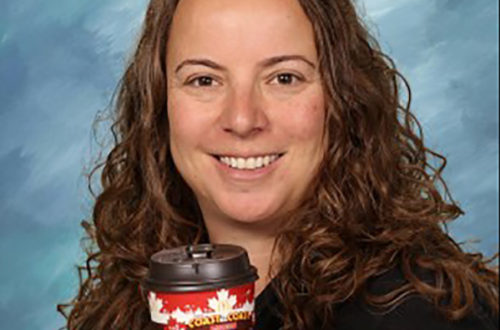I have seen English teachers sit around and discuss the books they are reading and social studies teachers debate current issues and their impact on society. I have seen career and technology studies (CTS) teach-ers talk to their students about the projects they are working on—a woodworking project, an automotive problem or even an attempt to code an Arduino board to allow for more functionality in their home. As I meet more teachers, I am constantly hearing about how they are students of their own subject areas outside the walls of the classroom.
This has caused me to reflect—which I ask you to do as well—on the question, How often do I sit down and work on mathematical problems outside my own classroom?
When I first asked myself this question, I, sadly, had to respond with rarely or never. At the time, I would ask my students to try multiple questions daily, learn new ideas, consolidate older information and, ultimately, be problem solvers when faced with ques-tions they had never seen before; regretfully, I mod-elled none of this outside the classroom.
Perseverance, resilience, creativity and critical thinking are what I expected of my students daily in mathematics, but until I embraced these practices in my own life, I didn’t truly know how it feels to be stuck in a problem and not know what to do.
“What do you do when you don’t know what to do in a math problem?” I asked this question to 800 Grades 4–12 students, and the number one answer (from over 80 per cent of the respondents) was “Ask the teacher.” This was startling! I couldn’t arm my students with authentic problem-solving strategies until I put myself in their shoes. I tried working on problems that caused me to stop and ask myself, What should I do now? Only then could I understand that global problem-solving strategies were missing in my own math classes.
Originally, I would teach students that when they were working on a problem from unit X, they should try certain strategies, and in unit Y, try other strategies. I wasn’t teaching true problem solving; instead, I was teaching strategies specific to certain domains. When I tried solving math problems on my own time, and at my own level, I quickly learned that the following are some of the best strategies:
- Visualize the problem. Draw it out.
- Guess-and-check. Change your guess slightly and see how it changes the result.
- Approach the problem logically. Use if-then state-ments to simplify information.
- Identify a pattern. Change a number, a sign or something critical, and see how that changes the problem.
- Work backward. If we can hypothesize the result, what else would have to be true?
- Solve an easier problem. Simplify the problem into one that is easier to work with, and see if you can identify anything new.
My challenge for myself now—and I extend this challenge to you—is to try a math problem once a week. Ensure that the problem isn’t one you can solve in seconds, or even minutes. Try to find a problem that makes you reflect on the question, What do I do when I don’t know what to do in a math problem?
David Martin
David Martin has a master’s degree in mathematics, a bachelor’s degree in education and, most important, a love of learning. Throughout his career, he has challenged many traditional educational practices, such as homework, tests and even grading. As a divi-sion math/science lead teacher, he has the opportunity to learn with teachers and students from pre-K to Grade 12. He is also president of MCATA. You will often find him tinkering with code, playing with math-ematics or counting by prime numbers.





